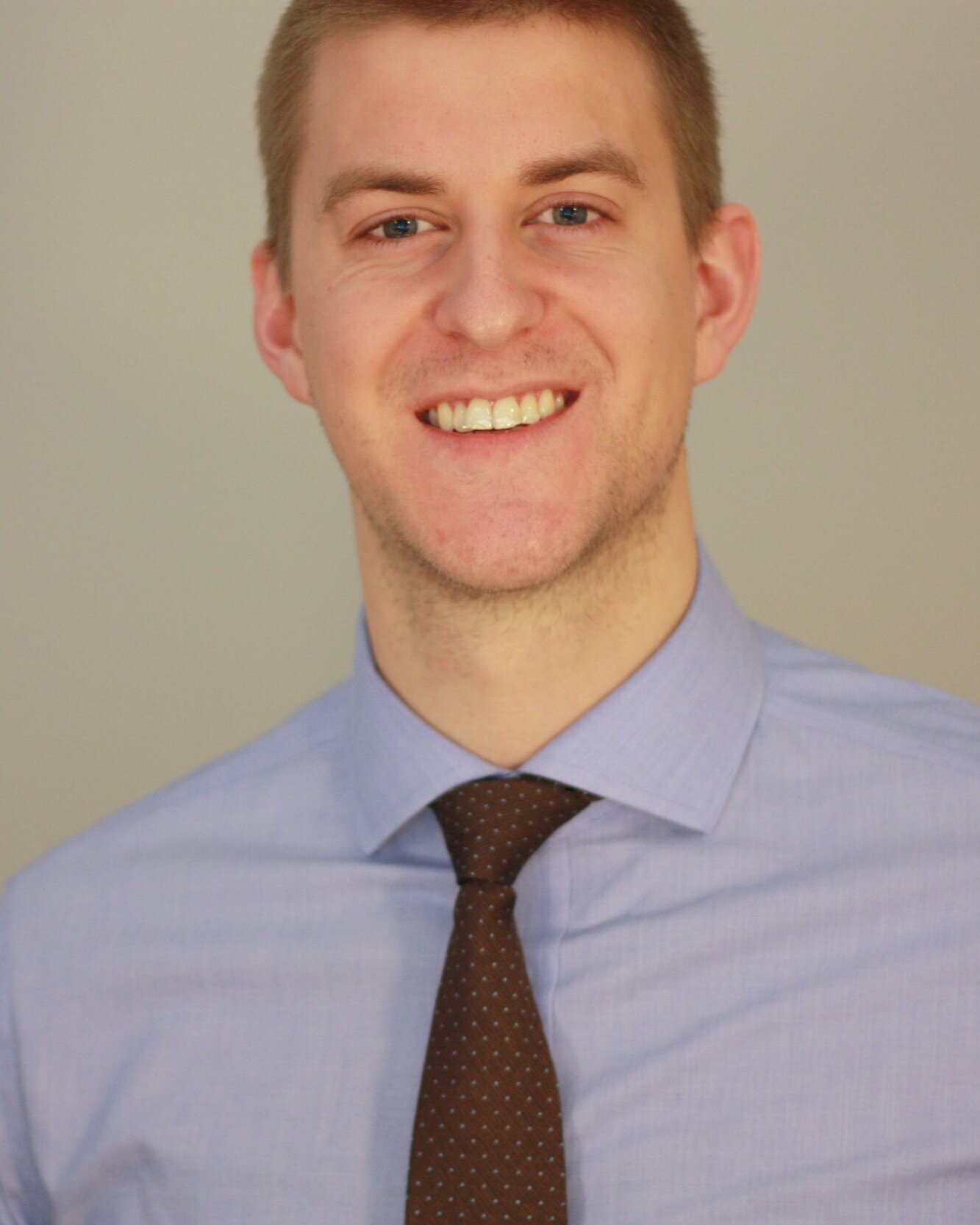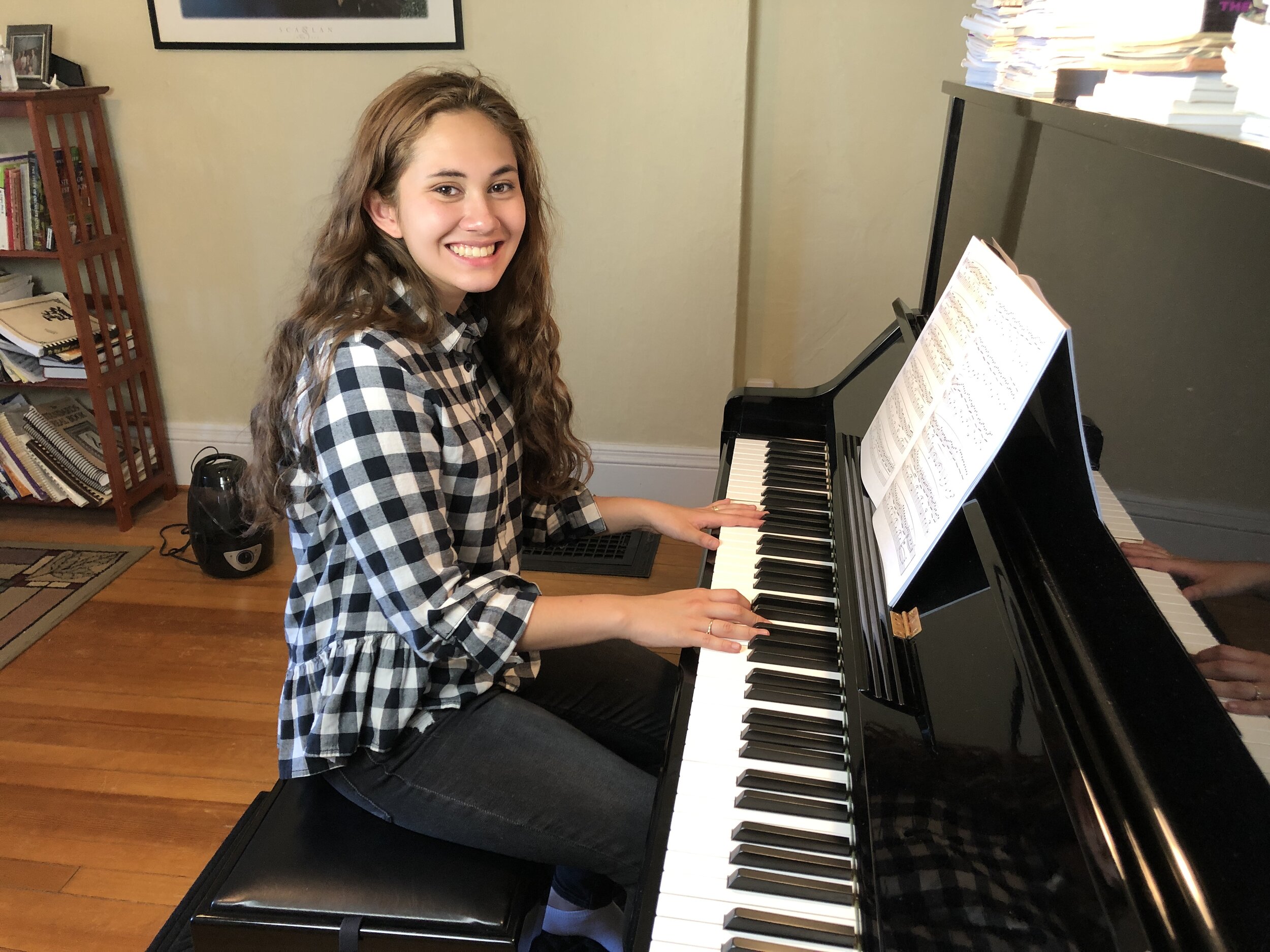Learning to Improvise: Two brave adults explore new music-making territory
/Paying tribute to hard-working students is always a pleasure for me. And this month I’m especially pleased to shine the studio spotlight on Amy Arbogast and Mike Morath - two working professionals who have been making noteworthy progress with piano over the past year.
Beginnings
While Amy and Mike came to study piano from different pathways, they share some similar goals and reasons for including music in their lives.
Amy, a public speaking teacher and consultant, played guitar for many years before feeling a desire to explore a different chordal instrument. When we began working together, she told me that filling her house with piano music - especially during the holiday season - was something she wanted to share with her family.
Amy was also interested in learning a new skill - one that she didn’t necessarily have to master. The more important goal, she said, was to “just have fun.”
Mike, a human resources analyst, started piano lessons online and made some progress but then began feeling the need for more in-depth knowledge. He said: “I started piano by self-teaching with an iPad app and it helped to a certain point but it didn’t really capture the immediate feedback that I was looking for.”
Mike also told me that he had recently celebrated a milestone birthday and decided to make learning his favorite instrument more of a priority.
Beyond the Basics
Before starting lessons, most adults tell me that their primary goal is to develop skills that will help them play the music they enjoy. Some of these more “traditional” skills include playing technique, reading notation, and music theory.
Since Amy and Mike both came to lessons with some previous knowledge about music, these skills were, in fact, what they were expecting to learn more about. What they weren’t expecting, however, was to hear me say “Hey, let me show you another way you could play this song by improvising.”
What is Improvisation?
Okay, so I know that improvisation is a term that most people are already familiar with. Still, I’d like to offer a definition in terms of my teaching philosophy here at the studio:
Improvisation - is a creative activity that calls on performers to express their “in-the-moment” musical ideas in a safe and stimulating learning environment.
The Benefits of Being Imperfect
I always encourage (but never force) students to improvise when they begin their instruction. Why? Well, along with other well-documented benefits having to do with music development, students, over time, build confidence in their playing abilities - whether those abilities relate to improvisation or other aspects of music-making.
One of the main reasons that learning to improvise can be such a game changer for boosting confidence is because students come to understand that making mistakes and playing imperfectly is a natural part of the learning process. When performers adopt this mindset, they tend to reduce self-critical thinking and become more willing to experiment with their own musical ideas.
Here’s what Amy and Mike both had to say after having studied improvisation (along with their other skills) for a little more than a year:
Amy: “At first I found improvisation challenging and a little intimidating. But now I actually find improvising to be kind of freeing. It’s nice to be challenged to play a piece imperfectly and in a way that speaks to you. It’s a way to have fun and be creative.”
Mike: “Learning to improvise has allowed me to play more freely, put my own spin on things, and has opened up other musical doors that I didn’t know existed. I’d even say that improvising has affected other areas of my life - having me consider different ways of doing things.”
Bonus Skills
Confidence-building isn’t the only upside of learning to improvise. As I mentioned previously, there are other well-documented benefits associated with spontaneous creating - some of which I’ve listed below and plan to elaborate on in future posts.
Improvising:
Calls on Active Listening skills
Encourages Collaboration
Enhances Cognitive Flexibility
Promotes Brain and Body Health
Is just plain Fun
A Journey of Risks & Rewards
Up to this point, I’ve focused on many of the positives associated with improvisation. It’s only fair to admit, however, that most students express some degree of uneasiness when I first ask them to “give a try.” Remember the first part of Amy’s quote from earlier? (“At first I found improvisation challenging and a little intimidating.”)
I believe that Amy and Mike would agree with me if I described “learning to improvise” as an exciting ride on a (sometimes) bumpy and winding road. Learning to maneuver around roadside surprises and push through other obstacles, though, often leads to lasting feelings of accomplishment.
My hats off to Amy and Mike! Their willingness to explore new pathways to learning along with their dedication to practicing has allowed both of them to make rapid progress - all while juggling the competing demands of work and family life with their personal time. And that’s some good news worth sharing!




























